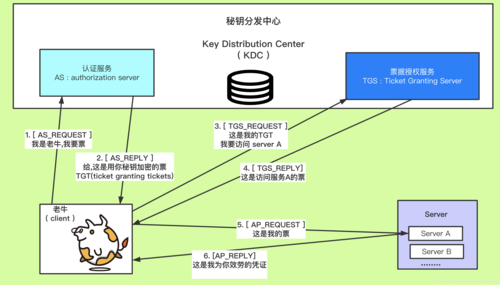Axios.js 跨域处理
背景介绍
在Web开发中,跨域问题是一个常见且重要的挑战,浏览器的同源策略(Same-Origin Policy)限制了从一个源向另一个不同源请求资源的行为,Axios 是一个基于 Promise 的 HTTP 客户端,用于浏览器和 Node.js,它可以发送异步 HTTP 请求到 REST 端点并处理响应,在使用 Axios 进行跨域请求时,开发者常常会遇到跨域问题,本文将详细探讨 Axios 跨域处理的各种方法与解决方案。
跨域请求的常见问题
1.Cross-Origin Request Blocked
由浏览器实施的同源策略导致的错误,默认情况下,浏览器不允许从一个源发送请求到另一个源,除非目标服务器明确授权。
2.No 'Access-Control-Allow-Origin' header is present on the requested resource
当使用 CORS(跨域资源共享)解决方案时,服务器需要在响应头中添加Access-Control-Allow-Origin 头信息来指示允许访问资源的来源,如果服务器没有正确配置这个头信息或配置不正确,浏览器会报告此错误。
**Network Error
当跨域请求在发送时出现网络错误(例如目标服务器不可访问、请求超时等),Axios 会捕获这个错误,并将其报告为 "Network Error"。
4.Preflight request failed
当使用 CORS 发起一些复杂的请求(例如带有自定义头信息或使用 PUT、DELETE 等非简单请求类型),浏览器会在发送真实请求之前发送一个 OPTIONS 预检请求,如果服务器没有正确处理 OPTIONS 请求或未返回正确的预检响应头,浏览器会报告 "Preflight request failed" 错误。
跨域解决方案
**CORS(跨域资源共享)
最常用的跨域解决方案是 CORS(Cross-Origin Resource Sharing)协议,它允许服务器指定哪些源可以访问其资源,当客户端发送跨域请求时,服务器会在响应头中添加相应的 CORS 响应头。
示例代码:
const express = require('express');
const app = express();
app.use((req, res, next) => {
res.header("Access-Control-Allow-Origin", "*"); // 允许所有域进行访问
res.header("Access-Control-Allow-Headers", "Origin, X-Requested-With, Content-Type, Accept");
next();
});
app.get('/api/data', (req, res) => {
res.json({ message: 'This is a cross-origin response!' });
});
app.listen(3000, () => {
console.log('Server is running on port 3000');
});
2.JSONP(JSON with Padding)
虽然 JSONP 只支持 GET 请求,但它是解决跨域问题的另一种常见方法,利用<script> 标签的特性来实现跨域调用。
示例代码:
<!DOCTYPE html>
<html>
<head>
<title>Page Title</title>
</head>
<body>
<h1>Here is the JSONP Response:</h1>
<div id="response"></div>
<script>
function handleResponse(data) {
document.getElementById('response').innerText = JSON.stringify(data);
}
</script>
<script src="https://example.com/api/data?callback=handleResponse"></script>
</body>
</html>
**使用代理服务器
在开发环境下,可以利用开发工具(如 Webpack、create-react-app)配置代理,将跨域请求转发至本地服务器,方便开发调试。
示例代码:
const { createProxyMiddleware } = require('http-proxy-middleware');
const express = require('express');
const app = express();
app.use('/api', createProxyMiddleware({
target: 'https://target-server.com',
changeOrigin: true
}));
app.listen(3000, () => {
console.log('Proxy server is running on http://localhost:3000');
});
归纳与最佳实践
在选择跨域解决方案时,考虑到项目的复杂性和需求,选择最合适的方法,以下是一些建议:
CORS:适用于大多数场景,但需要服务器端的支持。
JSONP:只支持 GET 请求,不适用于所有场景。
代理服务器:适合开发环境,不适合生产环境。
通过合理选择和应用这些方案,可以有效解决 Axios 跨域请求的问题,提高前后端的协作效率和用户体验。
相关问题与解答
Q1: 如何在 SpringBoot 项目中配置 CORS?
A1: 在 SpringBoot 项目中配置 CORS,可以通过以下几种方式:
全局配置:通过创建一个全局的 CORS 过滤器。
局部配置:在控制器或方法上使用@CrossOrigin 注解。
手动设置响应头:在控制器方法中手动设置响应头。
示例代码:
import org.springframework.web.bind.annotation.CrossOrigin;
import org.springframework.web.bind.annotation.GetMapping;
import org.springframework.web.bind.annotation.RestController;
@RestController
public class MyController {
@CrossOrigin(origins = "http://localhost:3000")
@GetMapping("/data")
public String getData() {
return "This is a cross-origin response!";
}
}
Q2: Axios 如何捕获跨域请求的错误并进行相应处理?
A2: Axios 可以通过catch 块来捕获跨域请求的错误,并根据错误类型进行相应处理,常见的错误包括网络错误、CORS 错误等。
示例代码:
axios.get('https://cross-domain-api.com/data')
.then(response => {
console.log(response.data);
})
.catch(error => {
if (error.response && error.response.status === 403) {
console.error("Forbidden: Cross-origin request blocked");
} else {
console.error("Request failed:", error.message);
}
});
以上内容就是解答有关“axios.js 跨域处理”的详细内容了,我相信这篇文章可以为您解决一些疑惑,有任何问题欢迎留言反馈,谢谢阅读。
原创文章,作者:K-seo,如若转载,请注明出处:https://www.kdun.cn/ask/656768.html


 微信扫一扫
微信扫一扫 

